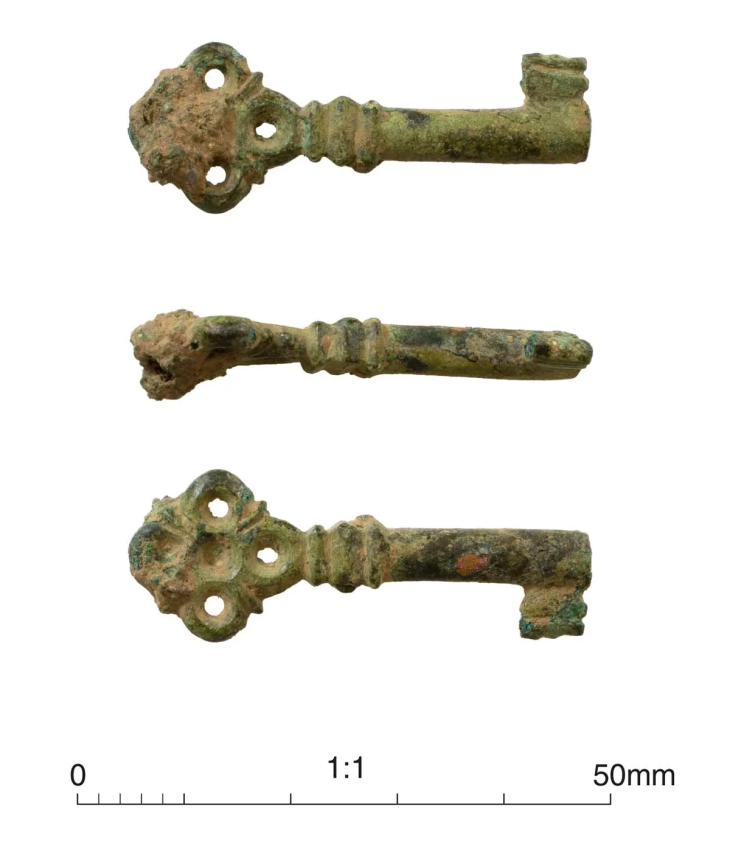A recent excavation in Claverham, North Somerset, UK, by Cotswold Archaeology’s Kemble fieldwork team has yielded a remarkable find – a beautifully crafted medieval key. This discovery sheds light on the history of the area and offers a glimpse into everyday life during the Middle Ages.
The excavation site, located near the 19th-century manor house of Court De Wyck, aimed to uncover evidence of the medieval manor of the same name. While archaeologists unearthed a series of walls related to the manor’s development, the star of the show was undoubtedly the key.
Dating to the late medieval period (c. 1300–1539), the key was discovered near a post-medieval wall that followed the original medieval boundary of the manor house. Identified as a rotary key, a mechanism requiring rotation to unlock tumblers or levers within a lock, this find offers a tangible connection to the past.
The history of keys and locks stretches back a staggering 6,000 years, with ancient civilizations in Babylon and Egypt crafting the first examples from wood. However, the limitations of wood – its susceptibility to breakage and weight – led to advancements during the Roman period.
The Romans ushered in an era of sturdier locks and keys made of metal. Additionally, the introduction of wards, internal obstructions hindering unauthorized access, further enhanced security. Notably, Roman keys were also much smaller, making them more portable. Wealthy Romans even incorporated elaborate keys into their attire, symbolizing their status.
The Claverham key reflects this tradition of ornate key design. Crafted from a copper alloy, it boasts a decorative bow, or handle, featuring a quatrefoil motif – a four-leaf clover design – with perforations adorning each petal and the center. Three sub-rectangular moldings at the junction of the stem and bow create a bulbous collar. The circular, hollow stem leads to a sub-rectangular bit with at least one groove, the part that interacts with the lock’s internal mechanism.

This key likely secured a door or chest and bears resemblance to a common medieval type called the “London type VI.” These keys were typically large (80-100mm long), chunky copper alloy keys with hollow or partially hollow stems and complex bits.
While the Claverham key shares some characteristics with the “London type VI,” its smaller size (likely between 50-70mm) places it within a less common category of medieval keys. These smaller keys, though similar in design, typically featured simpler bits.
While archaeologists have assigned a probable date to the key, the mystery of what it unlocked remains. This unanswered question fuels the imagination, leaving us to wonder about the treasures or personal possessions it once safeguarded within the medieval manor of Claverham.
The Claverham key serves as a captivating reminder of the ingenuity and artistry present in everyday life during the Middle Ages. As further research is conducted, this exquisite find may offer additional insights into the lives of those who once inhabited this historic Somerset village.
